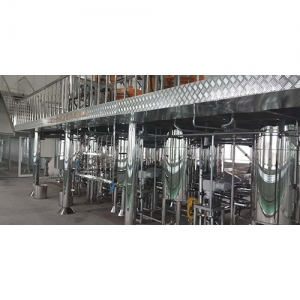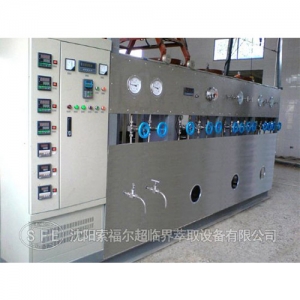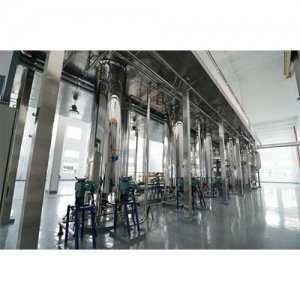Classification of reaction vessels
Date of release:2018-10-23 Author: Click:
1. According to the heating/cooling method, it can be divided into electric heating, hot water heating, heat conducting oil circulation heating, far infrared heating, external (internal) coil heating, jacketed cooling and kettle cooling. The choice of heating mode is mainly related to the heating/cooling temperature required for chemical reaction and the amount of heat required.
2. According to the material of the reactor, it can be divided into carbon steel reactor, stainless steel reactor, enameled glass reactor and steel-lined reactor.
2.1. High-pressure reactor
Scope of application: environments free of corrosive liquids, such as certain oils.
2.2 stainless steel reactor (KCFD series high-pressure reactors)
1. Heating structure type
Electric heating type, jacket type, outer half pipe type, inner coil type, volume is 0.01m3 ~ 45m3
2, material
Carbon steel, stainless steel, high temperature resistant stainless steel, strong acid and alkali resistant stainless steel, enamel or PP material.
3. Stirring type
Slurry type, anchor type, frame type, propulsion type and single (double) screw type, and other types of slurry blades can be designed and manufactured according to customer requirements [1].
Applicable scope: is suitable for the petroleum, chemical industry, medicine, metallurgy, scientific research, colleges and departments such as high temperature and high pressure chemical reaction experiment was carried out, and used to complete the hydrolysis, neutralization, crystallization, distillation, evaporation and storage, hydrogenated, alkylation, polymerization, condensation, heating mixed, thermostatic reaction process, such as the viscous and particles of the material can achieve high mixing effect.
2.3 glass lining reaction kettle
Scope of application: widely used in petroleum, chemical, food, medicine, pesticide, scientific research and other industries.
2.4 steel lining PE reaction kettle
Applicable scope: applicable to acid, alkali, salt and most alcohols. Apply to liquid food and drug refining. It is an ideal substitute for rubber lining, FRP, stainless steel, titanium steel, enamel, plastic welding plate.
2.5 steel lining ETFE reaction kettle
Scope of application: excellent anticorrosive property, anti-acid, alkali, salt, strong oxidant, organic compound and all other strong corrosive chemical medium.
3. Internal pressure can be divided into atmospheric pressure reaction kettle, positive pressure reaction kettle and negative pressure reaction kettle.
4. According to the mixing form, it can be divided into blade type, anchor type, frame type, screw belt type, turbine type, dispersing plate type, combination type, etc.
5. According to the heat transfer structure, it can be divided into jacket type, outer half pipe type, inner coil type and combined type. The copywriter zhang lai originated from the Internet

Supercritical foaming equipment
The address of this article:http://www.sy-tc.com/en/news/423.html
Key word:Carbondioxideextraction,Aerogelequipment,Supercriticalfoamingequipment
The next one:9/5000 The way carbon dioxide is produced
Recently, browse:
Related products:
Related news:
- The application of carbon dioxide
- Application range of supercritical extraction equipment
- The development of supercritical fluid
- What factors affect extraction
- An overview of carbon dioxide
- What are the characteristics of supercritical carbon dioxide
- Product characteristics of supercritical fluid
- Supercritical CO₂ solvent content
- 9/5000 The way carbon dioxide is produced
- A brief explanation of supercritical extraction


















